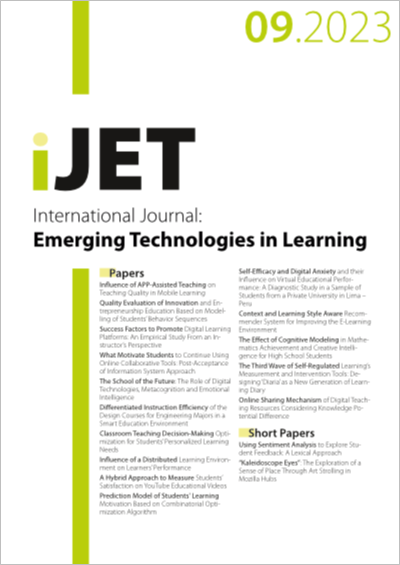Quality Evaluation of Innovation and Entrepreneurship Education Based on Modelling of Students’ Behavior Sequences
DOI:
https://doi.org/10.3991/ijet.v18i09.40227Keywords:
student behavior sequence, innovation and entrepreneurship (I&E) education, education quality evaluation, gate recurrent unit (GRU) model, grey predictionAbstract
In the Innovation and Entrepreneurship (I&E) education of some higher vocational colleges, there’s a common problem: serious disconnection between professional education and practical education, which may result in poor quality of I&E education. With the help of I&E education quality evaluation, we can figure out the distribution and utilization of education resources, discover and solve problems during the teaching process in time, and optimize and adjust teaching content and methods in a targeted manner. Student behavior analysis can reveal the actual needs and questions encountered by students during I&E education, thereby attaining more pertinent and pragmatic evaluation results. For this reason, this paper aims to study the I&E education quality evaluation by means of modelling students’ behavior sequences. At first, a student I&E behavior sequence feature extraction module was created based on attention mechanism, and the student I&E ability level feature extraction layer and student I&E ability level feature evolution layer contained in the module structure were introduced in detail. Then, the data sources of I&E education quality evaluation based on students’ I&E behavior analysis were given, the I&E behavior sequences of students were modeled based on the single-sequence first-order linear differential equation model GM(1,1), and the established model was applied to I&E education quality evaluation. At last, experimental results verified the validity and accuracy of the proposed method.
Downloads
Published
How to Cite
Issue
Section
License
Copyright (c) 2023 Nan Zhang (Submitter); Mingzhe Niu

This work is licensed under a Creative Commons Attribution 4.0 International License.



